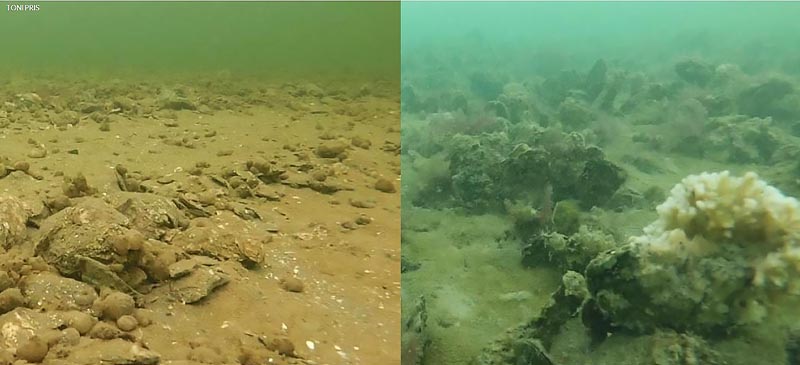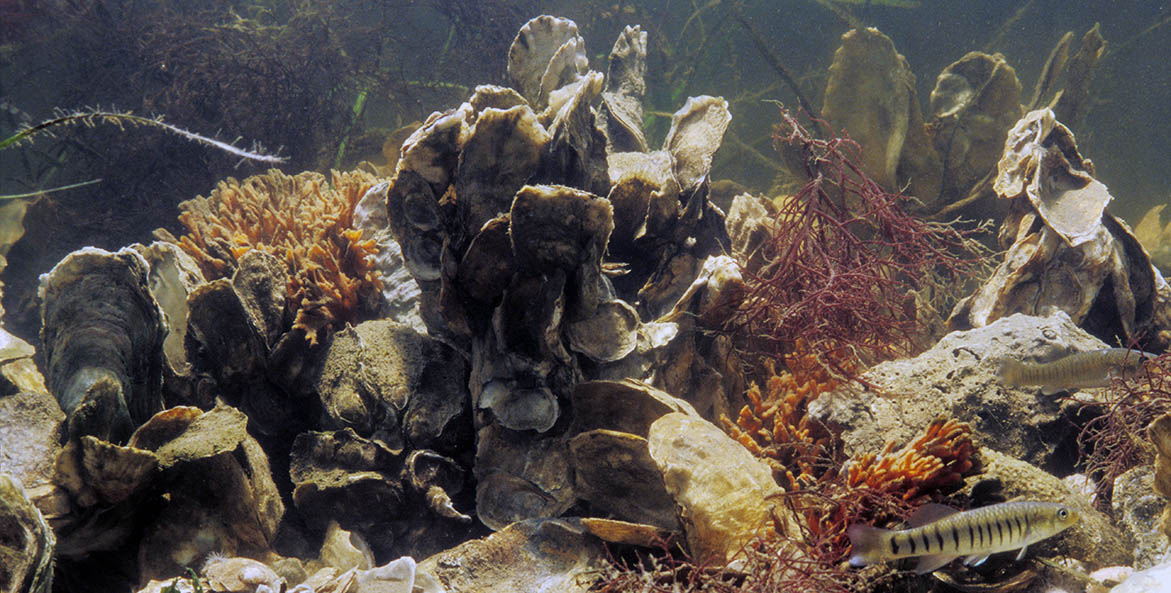The first read of the Comprehensive Evaluation of System Response (CESR) report felt like a real shake up—almost as if we were going in a totally new direction in terms of Bay restoration. After all, the point of the report is to show what hasn’t been working well and needs to change. But once you've had a moment to digest what it's really saying, you realize that the things this report highlights are things that CBF has been advocating for many years.
So, what does it mean for restoration moving forward? It may sound like a new approach to say we're going to put the focus on people; that we're going to focus more on the shallows instead of the deep trench of the Chesapeake Bay, and so on and so on. But I'm here to tell you not to fret, because we have already done this, we’re already focused on this, and we can show that it works.
I want to take you back about 15 years to 2008. The Chesapeake Bay program, state and federal partners, and others were considering introducing a non-native oyster to the Chesapeake Bay because we were so concerned that our native population could never come back on its own. A study followed in 2011 confirming those suspicions—we had lost 99.7 percent of our oyster population in Maryland. We were at the rock bottom for oysters in the Chesapeake Bay (pun intended).
But what we decided to do instead was redouble our efforts on our native oyster and not introduce a non-native species. All the state and federal agencies came together to set a very concrete goal—outlined in the 2014 Chesapeake Bay Watershed Agreement—that said we're going to restore oysters in 10 rivers in Maryland and Virginia by 2025. Once we had the big picture defined, partners put together a scientific work group that defined what success looked like. The Oyster Success Metrics Work Group was established in 2011 and set out what we should strive for in terms of oyster restoration in the Bay. It is these metrics which define for every project, in every location whether we are achieving restoration goals. And it is this process of metrics, performance tracking, and adaptive management that is now held up as a model across the country.
Those federal and state partners have now planted billions of oysters in Maryland and Virginia toward this goal. And what we have found is that by focusing on the needs of our living resources, by rebuilding those oyster reefs, by ensuring that oysters have the habitat that they need, we've achieved amazing success.

An unrestored harvest site in Maryland's Broad Creek (left-hand side) versus a vibrant, restored oyster restoration area in Harris Creek on Maryland's Eastern Shore.
Toni Pris
The photos you see above are of an unrestored harvest site in Broad Creek on the left-hand side versus on the right-hand side, a restored oyster restoration area in Harris Creek on Maryland's Eastern Shore. You can see the incredible difference in terms of the life that you see in between the two photos. You see sponges and mussels and a vast array of life and habitat on the right. On the left, in the unrestored area, you see sediment-laden pieces of shell, maybe a few sea squirts here and there, but not the same rich diversity as what we see in the restored area.
And so, by focusing on the science, by ensuring that we're supporting the needs of our living resources, the habitats that they need, the water quality that we need, we can also reduce pollution.
Harris Creek has had more than 350 acres of oyster restoration completed. At the time of its completion, it was the largest oyster restoration project in the world. More than 2 billion oysters were planted. And these water-filtering oysters can get us to the same goal that we are trying to achieve under the Chesapeake Clean Water Blueprint.
The oysters that were planted in Harris Creek are now capable of cleaning and filtering the entire volume of Harris Creek in the summertime in 10 days or less. Not only that, but over a 10-year time period, the oysters that were planted here will remove 1 million pounds of nitrogen pollution.
So, although this project was not necessarily focused on achieving Bay water quality goals, it did just that.
By focusing on achieving water quality in the Bay shallows, we have also helped contribute to removal of nitrogen pollution, which will help us further our Bay Agreement goals and our water quality goals overall. This is the living resources approach that the CESR report highlighted. It can work, and it is something where we have adaptively managed toward making sure that our goals are being achieved.
If things are happening in these oyster reef systems, they are actively monitored. If they are not achieving those success metrics, which the scientific committee established and agreed upon before we started the projects, then they go back and they fix it.
It's an iterative process, and it's one that I hope will become a model for several of the other ways that we implement best management practices to reduce pollution across the watershed.
So, fret not, we can do this.




